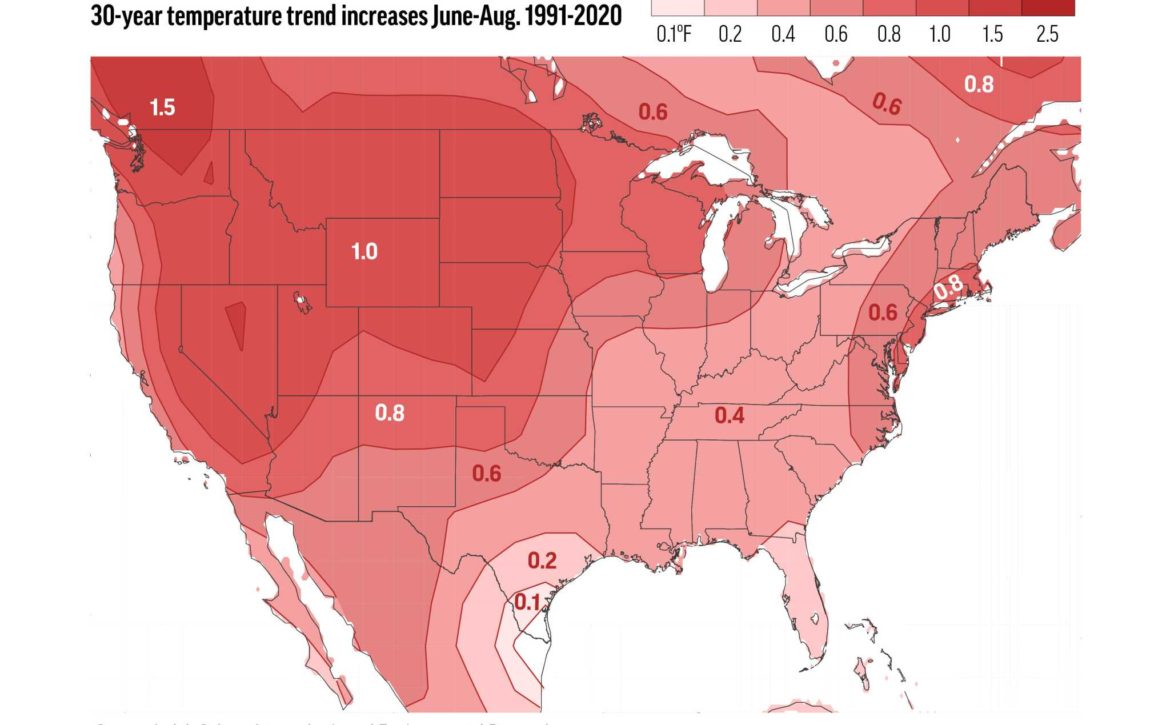
Summer swelter trend: West gets hotter days, East hot nights
As outlandish as the killer heat wave that struck the Pacific Northwest was, it fits into a decades-long pattern of uneven summer warming across the United States.
The West is getting roasted by hotter summer days while the East Coast is getting swamped by hotter and stickier summer nights, an analysis of decades of U.S. summer weather data by The Associated Press shows.
State-by-state average temperature trends from 1990 to 2020 show America’s summer swelter is increasing more in some of the places that just got baked with extreme heat over the past week: California, Nevada, New Mexico, Arizona, Utah, Oregon and Colorado.
The West is the fastest-warming region in the country during June, July and August, up 3 degrees on average since 1990. The Northwest has warmed nearly twice as much in the past 30 years as it has in the Southeast.
That includes Portland, Oregon which set a record 116-degree high that was 3 degrees warmer than temperatures ever recorded in Oklahoma City or Dallas-Fort Worth.
Although much of the primary cause of the past week’s extreme heat was an unusual but natural weather condition, scientists see the fingerprint of human-caused climate change, citing altered weather patterns that park heat in different places for longer periods.
“The ridiculous temperatures in the Pacific Northwest may on one hand be considered a black swan (ultra-rare) event, but on the other hand are totally consistent” with long-term trends, said meteorologist Judah Cohen of the private firm Atmospheric and Environmental Research. “So I am not going to predict when is the next time Portland will hit 116 but I believe hotter summers for the broader region are here to stay.”
Climate change is altering and weakening the jet stream, narrow bands of wind that circle the Earth…
Read More


